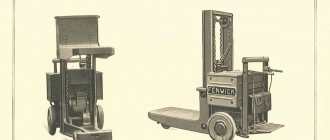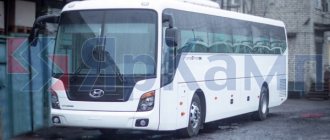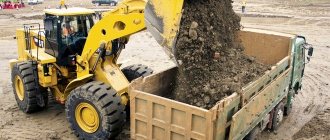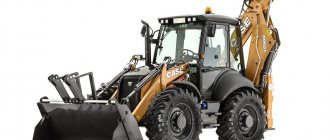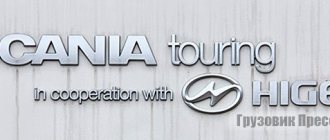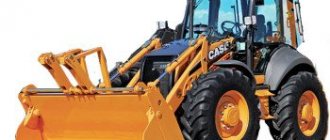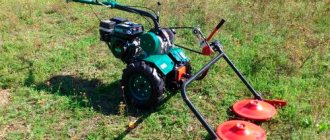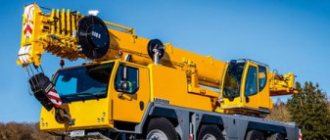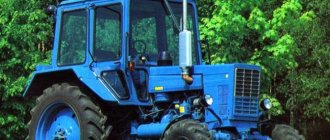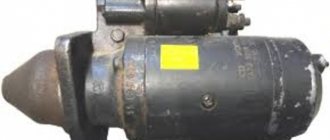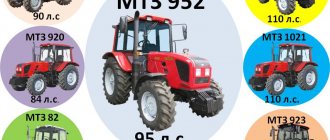- home
- Articles
- Loader, stacker and reach truck: features, differences and where they are used
Loader, stacker and reach truck are all types of warehouse equipment. Their main purpose is to carry out loading and unloading activities, transportation and movement of goods. They have a common feature - a lifting mechanism with which they rise to a height. But despite the structural similarity, they differ from each other in many ways.
What is a stacker
The stacker is a trolley with a mast and lifting forks. It can be manual or electrically driven. The main task of such equipment remains the stacking of pallets with goods on top of each other or on equipped rack shelves. Compared to a traditional forklift, it is much more compact, allowing it to move easily between racks.
Design differences
In fact, a reach truck is an improved model of an electric stacker. The main design difference is the design of the lifting mechanism and the absence of support consoles, which allows it to grab pallets from any side and lower them onto racks or ramps of any type.
The forks of a stacker can only move vertically up or down. Therefore, in order to deliver the cargo to the desired point, the stacker must necessarily move along the floor.
The reach truck has a retractable mast with a carriage that provides maneuverability in tight spaces. In some models, the carriage is capable of rotating at a certain angle, which allows for more precise manipulation of the load.
The stackers have several modifications: accompanied, with a folding platform for the operator and with a cabin. Reach trucks are equipped with an open or closed cabin.
What is a reach truck
Fundamentally, a reach truck is a type of stacker that has an additional retractable load lifter. Depending on the design, the latter can be extended together with the mast or exclusively in a fork format. The equipment is designed to work in narrow aisles and in warehouses with high storage heights. The use of a reach truck significantly increases the storage density of goods and reduces warehouse rental costs.
Workspace requirements
With the same dimensions, a reach truck is much more maneuverable than a stacker. As a rule, the difference in working space requirements is up to 800-1000 mm. To work in aisles 2-2.5 m wide, special narrow-aisle models of reach trucks are produced. Their feature is a rotating fork carriage that can move in different directions. These models are equipped with a cabin with an operator's seat, which is located non-standardly - sideways to the racks.
To increase productivity, some narrow aisle models provide the ability to lift the operator's cabin along the mast at the same time as the load.
Difference between stacker and reach truck 5 main points
To a first approximation, a reach truck remains a type of stacker, but in reality there is a serious difference in technical and user parameters. In short, the differences are point by point:
- design;
- lifting height (not always);
- complexity of management and maintenance;
- requirement for a free space for work;
- productivity and accuracy of work;
- workplace ergonomics;
- price.
Design
Here the main point lies in the design of the entire lifting mechanism. The stacker has a stationary mast, and the carriage with forks for picking up the pallet can only move vertically. If you need to move the load in a horizontal plane, then this is done by moving along the floor. In a reach truck, the mast has a retractable design, which simplifies the placement of goods on racks, stabilizes the overall load and provides increased maneuverability when moving or working in cramped conditions.
Lifting height
The stacker provides lifting of the forks to a height of within 6 meters (depending on the model), and for a reach truck this figure reaches 12 meters due to the presence of several technical solutions:
- presence of a movable carriage;
- the presence of a counterweight or a cabin that plays its role;
- possibility of tilting the forks and mast.
As a result, a reach truck is much more flexible in this respect than a stacker, which allows it to be used in a warehouse with high rack heights to save space.
Difficult to manage and maintain
Fundamentally, the stacker has a simpler design, which reduces the cost of personnel training and general maintenance. For small warehouses, such equipment will be more profitable due to this and lower price.
Productivity and accuracy
Here the reach truck clearly has an advantage, because due to the retractable load lifter there is no need to perform additional maneuvers. At the same time, tilting the mast, shifting the carriage, and the presence of a video surveillance system increases the accuracy of cargo placement. At the same time, the larger diameter of the reach truck wheels improves the ability to overcome obstacles and move on rough floor coverings, which often occurs in warehouses. Another difference lies in maneuverability. With the same overall dimensions, the stacker will require up to a meter of additional free space, which can be critical for warehouses with narrow aisles.
Ergonomics of the workplace
The stacker can be with an operator's cabin, a platform or a driven type. The last option is the most common, but requires pushing the device with a load to the desired location, which slows down the work. Reach trucks usually have a cabin for the driver, who can be standing or sitting. The latter option allows the operator to carry out his duties without interruption throughout the working day.
Differences
First of all, it is worth noting that a loader is necessarily a self-propelled machine equipped with an engine. Stackers and reach trucks are not always equipped with it.
The main task of a stacker and reach truck is to lift the load to a height and stack it. Forklifts also have the ability to lift loads onto racks, but its main purpose is transportation.
Some stackers are equipped with an electric motor. Unlike forklifts, they are compact and in most cases do not have a counterweight. The lifting capacity of this equipment is from 1 to 2 tons, and the height can be extended to 6 meters.
Another distinctive feature of reach trucks is that their masts can rise much higher – up to 12 m. For convenience, some models are equipped with a tilting mast. Modern reach trucks are equipped with an operator’s cabin and reach speeds of up to 12 km/h. The factor that should be taken into account is that the maximum weight of the load decreases with each meter of height to which it rises.
Results of comparison and conclusions for tasks
In practice, both types of warehouse equipment are actively used. In small warehouses with a small volume of work, you can buy a stacker, and if the acceptance and shipment of goods is active, and the pallets themselves are at a high height, then you cannot do without a reach truck. The price for them will differ by 1.5-2 times, but due to greater productivity this difference is leveled out quite quickly. You can select suitable equipment for working in a warehouse, lifting cargo, rigging work in our company by contacting phone number 8 or sending a request to
Performance
Reach trucks process cargo almost 2 times faster than stackers. In this case, the accuracy of cargo positioning is achieved due to the tilt of the mast, rotation or lateral displacement of the carriage, as well as video monitoring. It is important to take into account that the reach truck is less demanding on the quality of the floor covering and is more maneuverable.
For full operation of the reach truck, a passage width of 1.6 m is sufficient. Its productivity is up to 30 pallets per hour, while the stacker processes up to 15 pallets during the same time.
The above comparison does not mean that you definitely need to buy a reach truck. After all, the purchase of equipment for a warehouse depends primarily on the turnover of goods per shift and the method of storing goods.
Get ahead of your competitors in your work - how to do it using warehouse equipment
Over the past few years, the share of specialized warehouses used for a wide variety of purposes has increased significantly in our country. Development can be observed especially actively if you pay attention to large cities, where land, by definition, is more expensive than in other regions. Warehouses are operated, including by large logistics organizations, whose owners know very well how important it is to arrange the racks as compactly as possible. That is why in most situations, when the question arises of choosing suitable special equipment for a warehouse, preference is given to those models that are able to provide increased maneuverability in the minimum space between the racks. Naturally, the same stackers in various modifications act as the undisputed leaders in such cases.
Reach truck control according to all rules
In order to be able to become a reach truck operator, you must have a document similar to a forklift license. To obtain such admission, you must undergo professional training in specialized courses and obtain the appropriate qualifications. Next, the inspector takes the exam, after which the student receives a category B tractor driver’s license.
What batteries are installed on stackers?
Most models of equipment are equipped with either acid or gel batteries. The first ones are serviceable batteries and are considered obsolete. They require regular monitoring of the electrolyte level and periodic topping up with distilled water. Such batteries must be charged in well-ventilated areas, since the process actively releases explosive hydrogen. Gel batteries require no maintenance and usually do not require a special charging room. However, their cost is slightly higher than that of acidic ones. Batteries differ not only in type, but also in the nature of use. They come in starter and traction types. The first ones have a voltage of 12 V and are used on non-self-propelled equipment with electric lifting or on low-power self-propelled stackers. Traction batteries produce a voltage of 24 V or more. They are installed on electric stackers designed for high and intense loads.
Multifunctionality in those warehouse activities that other equipment is not able to perform
You can list several technical characteristics that are unique to a stacker; even standard models of reach trucks cannot compare with it in this regard. For example, the presence of a special retractable mast allows you to work with packed racks, thus capturing pallets from any side. Separately, it is worth noting the ability to tilt the forks up and down - this way the load is placed in place with greater accuracy.
The need to provide high-quality organized crime groups
Such a parameter as the carrying capacity of any electrical equipment intended for use in a warehouse directly depends on:
- on the power of the hydraulic pump;
- the entire weight of the equipment, taking into account the weight of the battery;
- center of gravity.
The last parameter deserves special attention, since in the stacker it is located between the support consoles. This placement makes the equipment more stable. The low wheelbase also plays a role in this regard, especially when you compare this design feature with a loader.
The lifting mast provides good residual lifting capacity and demonstrates increased stability during cargo handling. In this way, it is possible to significantly reduce the time period required to perform loading and unloading operations.
High productivity unlike other warehouse equipment
From all the characteristics that were listed earlier, it becomes obvious how multifunctional a self-propelled stacker is as a warehouse equipment. With its help, you can, if necessary, perform a whole list of tasks of various types that neither a reach truck nor a loader could handle separately.
If we consider the need to move impressive volumes of cargo within one hour, then such a parameter as reducing the work cycle is of no small importance. In the process of choosing special equipment of this type, criteria such as speed and control should be taken into account, since the efficiency of the warehouse as a whole directly depends on them.
For example, if the moving speed of a loaded stacker is 4 km/h, then for a standard reach truck the same parameter will be twice as high.
Considering the lifting speed of loaded forks, it is worth noting that for a reach truck it is 400 mm/sec, while for a stacker it is only 120 mm/sec. However, this parameter largely depends on the power of the engine responsible for the lifting and movement processes.
The self-propelled stacker additionally has a special slow motion mode, with which you can more clearly position loads during loading and unloading.
Do I need to pay transport tax on an electric stacker?
It depends on the technical characteristics of the machine. In accordance with the Decree of the Government of the Russian Federation No. 938 of 08/12/1994 (as amended on 11/12/2012), which is devoted to issues of state registration of vehicles, self-propelled vehicles with an engine power of over 4 kW must be registered. Most electric stackers are equipped with motors ranging from 1–3 kW. Thus, they are not subject to state registration and, accordingly, there is no need to pay transport tax on them. But if we are talking about powerful machines over 4 kW, then they will have to be registered in the prescribed manner and face all the associated additional costs.
